It’s simple: cut the carbs, increase the fat, and you will be on track to following a highly effective weight loss diet.
However, as with any major dietary change, significantly restricting your carbs will increase your risk for certain short-term and long-term side effects — some of which will go away with minor adjustments while others will provide you with a clue that keto isn’t a healthy diet for you.
To clear up any confusion you may have about the risks of the keto diet, let’s take a closer look at what to expect from this dietary approach. Throughout this article, we will explore the many risks and dangers of keto dieting, and find out how to prepare for them and make the necessary changes for optimal results.
Is the Ketogenic Diet Safe?
For most people, the keto diet is safe. However, keto can come with an increased risk of digestive issues, nutrient deficiency, fatigue, impaired LDL cholesterol levels, and kidney stones when followed improperly.
Those who have specific health conditions, including cardiovascular disease, hypothyroidism, diabetes, chronic kidney disease, or a history of disordered eating, should consult their healthcare provider before adopting a keto or low-carb meal plan.
In the following sections, we will take a closer look at short-term keto risks, potential dangers, and how to address each one.
The Dangers and Risks of the Ketogenic Diet
Keto dieting provokes significant changes throughout the body that can be both positive and negative. Depending on a variety of factors, including your current health, genetics, activity levels, and medications, you may be at a higher risk to experience adverse effects as a result of implementing the keto diet.
Although the potential risks and dangers are minimal and inconsequential for most people, a select few will have an increased risk of long-term adverse effects that make the keto diet an unhealthy option for them.
To make this information more accessible, let’s break down the potential dangers and risks of keto dieting into three categories:
- Short-term risks that you can remedy
- Potential risks and dangers for those who have specific conditions
- Potential risks and dangers for women
Short-term Risks of the Keto Diet and How to Remedy Them
This section consists of the most common complaints and struggles that keto dieters will come across. In most cases, these risks can easily be addressed and eliminated completely. Below is a graphic for a quick look at the short terms risks of a ketogenic diet and how to remedy it. If you want to read more about the risks or solutions, scroll down for an in-depth explanation of each.
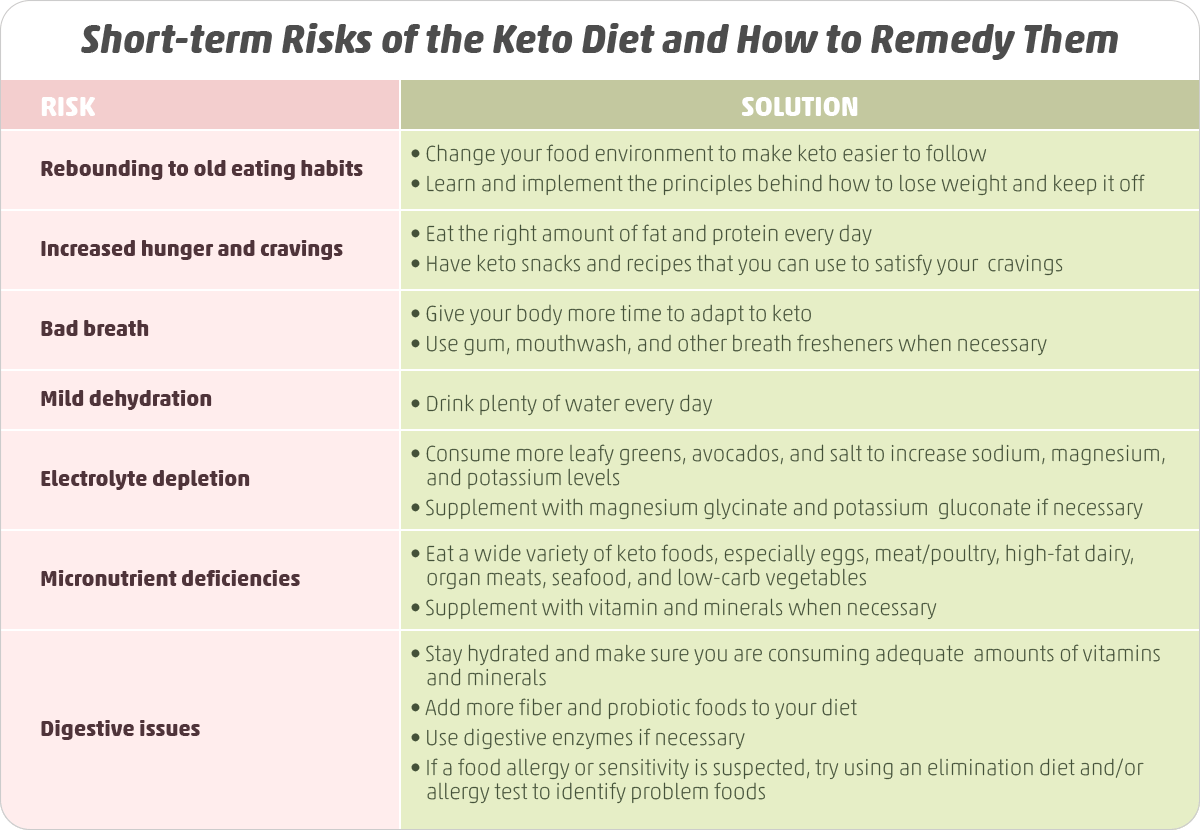
The Rebound Effect: Struggling to Stay on Keto
Since keto is such a vastly different diet than what most people follow, it can be hard to stick to (at first). In one study, for example, more than half the participants stopped following the diet before the research wrapped up.
Unfortunately, it is all too common to start a new diet, get some results, and eventually revert to old eating patterns and gain the weight back. To prevent this rebounding effect from happening to you, try looking at your new dietary approach from a long-term perspective.
Can you stay with your diet for as long as you need to without adding too much extra stress to your life? Will you be able to keep your food intake under control and maintain your results for the long-term?
I’ve found that your chances of sticking to any diet will increase significantly when you (1) learn the primary principles behind changing your body composition and use them to dictate your decisions and (2) change your food environment and eating habits in ways that make it easier for you to stick to your diet plan.
If you would like to take a closer look at what it takes to lose weight and keep it off, check out these two articles:
Increased Hunger and Cravings
When you first start restricting carbs, you may experience intense hunger and cravings that may conjure up fantasies of eating french fries and ice cream.
To help you resist the temptation of indulging in unhealthy foods, try using these strategies:
- Make sure you are drinking plenty of water throughout the day.
- Have a high protein, high-fat meal to start your day (with more than 20 grams of protein).
- Add MCTs to your morning beverage.
- Have keto snacks on hand to prevent a spontaneous purchase of unhealthy convenience foods.
- Try some keto-friendly versions of your favorite high-carb foods like ice cream, pizza, and pasta.
- Make sure you are meeting your daily protein and calorie needs. Eating the right amount of protein and calories plays a crucial role in keeping you full and energized throughout the day. If you need help figuring out how much fat and protein you should be eating, try using our keto calculator.
Keto Breath
Once you’ve stayed on keto for a couple of days, you may notice a new odor coming from your mouth that smells like overripe fruit or nail polish remover. This is an unfortunate side effect of ketosis that occurs when acetone (i.e., the primary ingredient in nail polish remover) is created as a by-product of ketone production. Unfortunately, your body can’t do much with the acetone it makes, so most of it will be excreted with each breath.
Although this may repel people away, it also provides you with a clear sign that you are on your way to reaping all the benefits of keto and ketosis. As your body continues to produce ketones, it will become more efficient at creating and using the energy-shuttling ketone bodies, beta-hydroxybutyrate and acetoacetate, which will help reduce acetone levels and normalize your breath. In the meantime, while your body is adapting to ketosis, make sure you have breath-freshening gum or spray that you can use throughout the day to cover up keto breath (if you have it).
Mild Dehydration
The keto diet provokes glycogen loss and low insulin levels, two of the many factors that help us hold onto water and minerals.
This is the main reason why people tend to lose weight so rapidly during the first week of keto. By restricting carbs, glycogen and insulin levels will drop, causing your body to shed pounds and pounds of water weight.
If you are not mindful of your fluid and mineral intake, you may experience dizziness, nausea, cramping, headaches, gastrointestinal issues, and other symptoms of the keto flu. Luckily, these symptoms can be avoided by drinking plenty of water and supplementing with minerals.
Electrolyte Depletion
Along with rapid water loss, sodium and potassium will typically be excreted at higher rates while you are adapting to keto as well. This can cause fatigue, lightheadedness, headaches, constipation, and cramping. You can supplement your electrolytes (this is our favorite) to help combat these symptoms.
To ensure you are getting enough potassium, include avocados and leafy greens like spinach in your daily diet. Sprinkle some unrefined salt on every meal and in your water to replenish your sodium levels as well. Some ketogenic dieters suggest getting at least 5 to 7 grams of salt per day (one teaspoon to a teaspoon and a half per day) during your first week on the ketogenic diet.
Magnesium is another essential mineral that can make your transition to ketosis much easier. Although you won’t lose magnesium while you are restricting carbohydrates, many of us are deficient in it anyway. Just add some pumpkin seeds, almonds, and spinach into your diet to get a decent dose of magnesium.
To help you meet your magnesium and potassium needs, you can also supplement with magnesium glycinate and potassium gluconate.
Recommended doses of minerals to prevent negative symptoms:
Sodium
- 5 to 7 grams of unrefined salt per day
Potassium
- 3,500 mg per day for people ages 16 and up
Magnesium
- For men: ~400 mg per day
- For women: ~310 mg per day
Vitamin and Mineral Deficiencies
The keto diet cuts out many common foods that serve as good sources of vitamins and minerals, so you may be at risk for some micronutrient deficiencies if you aren’t careful.
The most common micronutrient deficiencies on keto are:
- Biotin
- Iodine
- Potassium
- Magnesium
- Sodium
- Vitamin E
- Vitamin D
To prevent these deficiencies from happening, make sure you are eating a diverse array of keto-friendly meats, poultry, seafood, dairy, eggs, and veggies. Some of the most micronutrient-dense keto foods are eggs, low-carb vegetables, seafood, and organ meats like beef liver.
For more specific information on how to meet your vitamin and mineral needs while you are on the keto diet, check out our comprehensive guide to micronutrients. In this guide, you will find out how to meet your micronutrient needs with keto foods and how to track your intake.
Changes in Bowel Movements: Diarrhea and Constipation
With a dramatic increase in fat and reduction in carbs, many people can experience loose bowels, diarrhea, or constipation. This is a relatively common occurrence during the first week of keto dieting and will typically pass on its own.
However, if your digestive issues show no signs of improving after a week, then try one or more of the strategies below that apply to your situation:
- Drink more water. Dehydration can cause significant changes in your digestive health, so make sure you drink up.
- Consume more minerals. If you’re not meeting your mineral needs, your risk of constipation and diarrhea will increase. One way to replenish your electrolytes is to consume avocados, low carb veggies, and salt. For more specific recommendations on mineral and water intake, check out this article.
- Add probiotics and fermented foods to your diet. Probiotics are a great way to restore the health of your digestive tract. Try getting your dose of probiotics with some raw sauerkraut, raw Kim chi, or a multi-strain probiotic supplement.
- Have more fiber. Since low carb, keto diets are very high in fat, some people forget to make room for vegetables. Eat more low carb vegetables, and you’ll get plenty of fiber that will bulk up your stool and get things moving. For more info on exactly what veggies you should eat, click here.
- Use digestive enzymes. If you have a hard time digesting fats or proteins, you may end up with off colored, soft, and running stool. In this case, it is best to try taking a digestive enzyme supplement that has ox bile, lipase, and proteases.
- Test for allergies and intolerances. For suspected allergies and intolerances, It is best to try an allergy test and an elimination diet that removes all common allergens and intolerances (wheat, eggs, fish, dairy, nuts, peanuts, shellfish, soy, and nightshade vegetables) for a period of time (3-4 weeks). If you are noticing positive changes and want to start adding these foods back into your diet, choose one at a time and tread slowly. Take note of how you feel. If you are still feeling great, move onto the next one. If at any time you experience adverse reactions to a certain food, chances are you have an allergy or intolerance to it.
If you’re interested to read more about the potential short and long-term effects of a ketogenic diet, click here.
Potential Risks and Dangers of Keto for Specific Conditions and Medications
Now that we have covered the short-term risks of keto dieting and how to avoid/remedy them, let’s take a look at the dangers of keto for people who have certain conditions.
Dangerously Low Blood Sugar Levels for Diabetic Populations
The keto diet restricts carbs so much that anyone who is on blood sugar lower medication or who has type 1 or type 2 diabetes must consult his or her doctor before making such a severe dietary change. As the body adapts to low-carb dieting, medication dosages and treatment plans will have to be revised, and blood sugar levels must be carefully monitored.
If you don’t work closely with your doctor as you are changing your diet, you will run the risk of hypoglycemia (dangerously low blood sugar levels).
For more information on how keto affects diabetic populations:
- Type 1 Diabetes and The Ketogenic Diet
- The Ketogenic Diet and Insulin Resistance
- How to Lower Your Blood Sugar Naturally
Ketoacidosis for Those Who Have Type 1 and Type 2 Diabetes
Ketoacidosis is a serious issue that can become lethal, but it is preventable (in most cases). It occurs when blood sugar levels and ketone levels are simultaneously too high. As a result, common ketoacidosis symptoms like vomiting, abdominal pain, dehydration, hyperglycemia, hypotension, tachycardia, and drowsiness can occur.
Ketoacidosis almost always occurs when a person with diabetes (type 1 or type 2) isn’t mindful of their blood sugar levels. This is why the best short-term prevention strategy is to monitor blood sugar levels and take diabetes medication when necessary.
For those of you who are concerned about getting ketoacidosis in the future, there is no need to worry. You can prevent ketoacidosis completely by making simple lifestyle adjustments and sticking to your treatment plan. For an in-depth look at ketoacidosis, check out this article.
High Cholesterol Levels That Get Worse While Keto Dieting
Although the evidence suggests that the keto diet can help optimize cholesterol in many groups of people, there are some that may not fare well, from a heart health perspective, when they follow a high fat, low carb diet.
Here is a brief overview of the most common conditions that can cause cholesterol levels to increase in an unhealthy way on a keto diet:
- Familial Hypercholesterolemia. Familial hypercholesterolemia is a condition where one or more of the genes for the LDL receptor are defective, making it more difficult for them to clear cholesterol from the blood. If a person with familial hypercholesterolemia is then put on a high-fat diet, they will become even more vulnerable to heart disease as the increased saturated fat and cholesterol content of the diet provokes higher cholesterol levels. To counteract these genetic vulnerabilities, it is may be best to follow a low to moderate fat diet with plenty of whole foods, fiber, monounsaturated fats, polyunsaturated fats (especially omega 3s), and limited saturated fats. This, as well as a lifestyle that prioritizes physical activity, stress relief practices, and plenty of sleep, should keep their cholesterol levels under control.
- Hypothyroid Related Issues. Thyroid hormones and cholesterol levels are intimately linked. When our thyroid hormone levels are low, LDL receptors will be less active, leading to high cholesterol levels and an increased risk of heart disease. If you have a history of hypothyroid issues, you may be struggling with unhealthy cholesterol levels — and the keto diet can make them even worse. However, for those of you who are being treated for your hypothyroid condition or who have an autoimmune thyroid condition, you may be able to follow the keto diet without any problems. In fact, many keto dieters with autoimmune thyroid conditions have found that the keto way of eating improves their quality of life more than any other diet.
One way to find out if the keto diet is not be ideal for your cardiovascular health is by checking if your total-to-HDL cholesterol ratio is above 4 and/or your LDL-P remains high or increases after starting the keto diet. If this is the case for you, then you may fare better with a low to moderate fat diet with plenty of whole foods, fiber, monounsaturated fats, polyunsaturated fats (especially omega 3s), and limited saturated fats.
If you’d like to learn more about how keto can affect your cholesterol levels and what you can do if you have one of these two conditions, check out this article.
Hormonal Issues That Are Worsened by Carb Restriction
Occasionally, keto dieters may still experience keto flu symptoms after they follow the keto diet for over a week, even after they implement the recommendations from previous sections. If this sounds like you, then the keto diet may not be the ideal diet for you from a hormonal perspective.
People who have hypothyroidism and/or adrenal issues, for example, are much more likely to struggle with the ketogenic diet. This is because insulin, carb consumption, and glycogen levels help regulate thyroid hormone production and adrenal health.
If you are already struggling with thyroid or adrenal issues before starting a low carb diet, then it is possible that restricting carbs will make things worse.
To keep your thyroid and adrenals healthy on a low-carbohydrate diet, it is essential that you consume enough calories, vitamins, and minerals. This will give your body the nutrients it needs to replenish glycogen, maintain thyroid function, and decrease stress levels.
If you are still feeling sluggish and tired after eating plenty of fat and protein, you may need to increase your carbohydrate intake by eating black beans, sweet potatoes, and/or other starchy whole foods until you are having between 100-200 grams of carbs per day.
Hypotension for People Who Are on Blood Pressure Lowering Medication
The current research data suggests that the ketogenic diet can help improve blood pressure. In fact, when researchers compared the effects of a low-carb diet to a low-fat diet and orlistat (a weight-loss and blood pressure lowering medication) on blood pressure, they found that the low carb diet was “more effective for lowering blood pressure.”
Although this is great news for anyone trying to lower their blood pressure, this also means that keto may provoke abnormally low blood pressure in those who are on medication.
It is also important to be mindful of your electrolyte and water intake if you are struggling to control blood pressure levels. As we learned earlier, the keto diet may provoke sodium, potassium, and magnesium deficiencies, which all play a role in regulating blood pressure.
For these reasons, anyone who is taking blood pressure lowering medication should read through this article and discuss their keto diet and blood pressure treatment plan with their doctor before making such a big dietary change.
Can Cause Excess Kidney Stress for Those with Chronic Kidney Disease
Though keto diets are safe for healthy kidneys, those with chronic kidney disease may not be able to handle the dietary change and should consult their physician before adjusting their meal plan.
This is because keto dieters tend to increase their intake of protein and processed meats, which compromised kidneys can struggle with.
That said, those who have fully functioning kidneys have no reason to worry. In fact, a well-formulated keto diet may help prevent chronic kidney disease by addressing two of its driving factors: chronically high blood sugar levels and hypertension.
Furthermore, the research literature on other health conditions has not found an increased incidence of kidney stones or any other kidney issues among those who followed a low-carb or ketogenic diet. This is likely because these diets emphasize daily low-carb vegetable intake, which has been found to reduce our risk of kidney stones and chronic kidney disease.
Potential Risks for Women Who Follow the Keto Diet
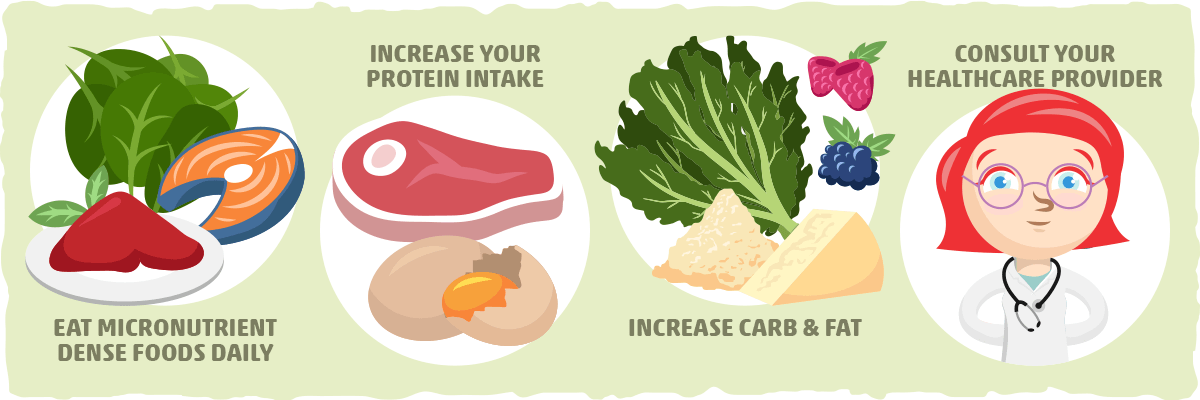
Although many studies have found keto to be safe and healthy for women, we cannot ignore the fact that carb restriction can still put them at risk for menstrual cycle irregularities. In fact, keto dieting can cause amenorrhea (an abnormal absence of menstruation) in some women.
If keto is having a negative impact on your cycle, then you may need to increase your carb intake to 15–30% of your total calories. For most women, this usually equates to around 75–150 grams daily, although some may find a slightly higher or lower carb intake to be more beneficial.
You may also be wondering if it is safe to be on keto while pregnant or breastfeeding. Although there isn’t much research on the safety and health effects of restricting carbs during pregnancy, many anecdotal reports and doctors indicate that the keto diet can be followed during every phase of gestation without any issues.
Here are some general recommendations that will help you and your baby stay healthy and low-carb at the same time:
- Eat micronutrient dense foods every day. The most nutrient-rich foods are pasture-raised organ meat, wild-caught sardines and salmon, and low-carbohydrate vegetables like spinach, kale, and broccoli. During early pregnancy and prior to conception, foods higher in folate, such as liver and dark leafy greens, are essential. Vitamin D (high in beef liver and sardines), iodine (high in seaweed and raw cheeses), and DHA (high in sardines and fatty fish) are essential as well.
- Increase your protein intake. You should aim to eat between 1 and 1.2 grams per pound of lean mass throughout pregnancy and breastfeeding. Use our keto calculator to help you figure out the right amount of protein for you.
- Up your carb and fat intake later in pregnancy. Later in the pregnancy and while breastfeeding, consume an extra 30-50g of carbs from fruit and dark green vegetables per day to aid milk production. Adding in extra calories from fat (300-500 calories worth) may be helpful as well.
- Consult your healthcare practitioner before making changes. It is important to always work together with your doctor to ensure the best health for you and your child.
Why Does the Keto Diet Have so Many Potential Risks?
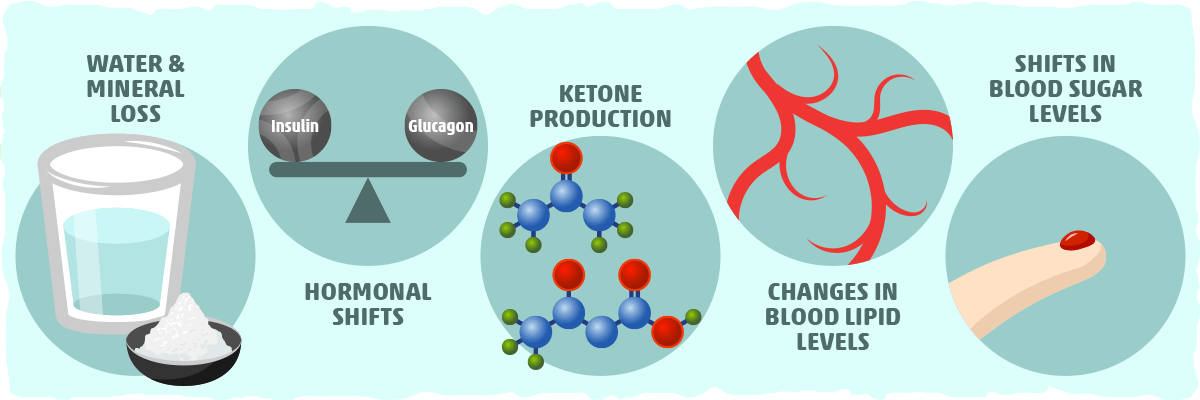
The keto diet comes with many risks because of how vastly different it is from the dietary patterns most of us are used to following. More specifically, restricting carbs to the point of stimulating sustained ketosis will cause these changes:
- Water and mineral loss. Carbs attract water and insulin helps us hold onto fluid and sodium. When we follow the keto diet, it can cause rapid water and mineral loss as our body adjusts to such low carb intake. If keto dieters aren’t mindful of their mineral and fluid intake, their new diet can provoke flu-like symptoms.
- Hormonal shifts. By restricting carbs, you will change the balance of glucagon and insulin. This will cause many changes throughout the body, especially regarding the function of your thyroid and adrenal glands. Most people can handle these changes without any issues, but there are a select few that may struggle to adapt without increasing their carb intake.
- Ketone production. Ketones are a highly efficient fuel source responsible for many of the benefits of keto dieting. However, they can also act as a mild diuretic and cause our breath to smell repulsive. Fortunately, all you need to do is rehydrate, replenish your electrolytes, and stick to the keto for your breath and fluid levels to normalize.
- Changes in blood lipid levels. By changing the carb and fat content of your diet, your cholesterol levels will change. The current research indicates that cholesterol levels should improve while you are on the keto diet. However, the increased fat consumption can also send cholesterol into unhealthy ranges for some people, especially those who are already struggling with familial hypercholesterolemia.
- Shifts in blood sugar levels. Most people will benefit from the blood sugar lowering effect of keto diets. However, for those who have type 2 diabetes, type 1 diabetes, and/or take blood sugar controlling medications, it is crucial to check with a doctor before cutting carbs. If this cautionary step is not taken, then people with these conditions will increase their risk of having dangerously low blood sugar levels when they start keto.
Although these five changes may seem risky and dangerous, we have yet to discover the good that they can do for our bodies. In fact, if you can stick to the keto diet and remedy the negative symptoms, all of the risks will turn into benefits that you can’t experience by following other popular diet plans.
The Benefits of the Keto Diet
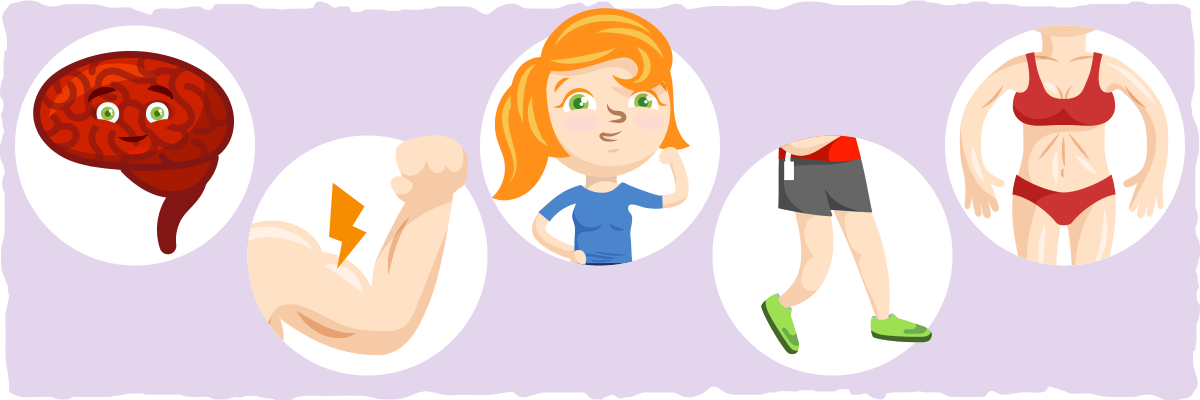
On a biological level, the keto diet will stimulate ketone burning, shift your hormone levels, and change your blood sugar, cholesterol, and triglyceride levels. These changes come with the risks that we spoke of earlier, but they also confer a host of benefits.
One of the most surprising things about the keto diet is how it can help reduce the severity of these conditions:
- Epilepsy
- Type 2 Diabetes
- Type 1 Diabetes
- High Blood Pressure
- Alzheimer’s disease
- Parkinson’s disease
- High Blood Sugar Levels
- Overweight/Obesity
- Heart Disease
- Polycystic Ovary Syndrome
- Fatty Liver Disease
- Cancer
- Acne
- Autism Spectrum Disorder
- Gout
As you can see, the combination of cutting carbs and stimulating the production of copious amounts of ketones can help many different groups of people on various levels, from the brain to the body to each and every cell.
In general, here are the main benefits that most people experience while they are on keto (even those who don’t have one of the conditions listed above):
- Enhanced cognitive function
- Better mood and clarity
- Stable and consistent energy levels
- Improved overall health and well being
- Increased endurance
- Decreased inflammation
- Improved fat loss and body composition
As long as you are mindful of the risks of keto, you will be able to reap these benefits and improve your health in a multitude of ways.
Is Keto Safe for Long-term Dieting?
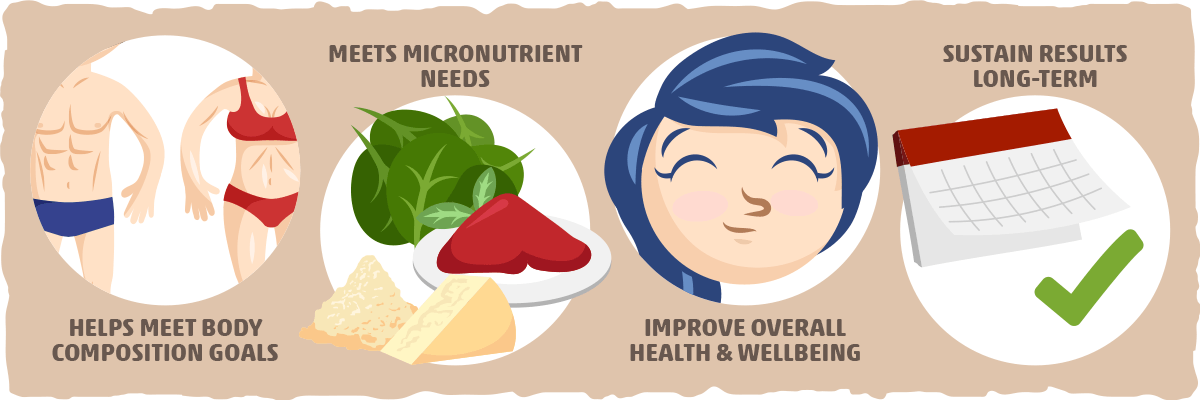
The research literature indicates that keto eating can positively impact several critical health markers, including blood cholesterol, triglycerides, blood sugar, A1c, and blood pressure. Though this provides convincing evidence of its safety, most of these studies only lasted 12 months or less.
Currently, the longest clinical trial on a keto diet lasted two years. This study compared a less-restrictive keto diet (with less than 15% carb content) and a low-fat, low glycemic index diet in subjects with type 2 diabetes.
Though both groups achieved similar weight loss results and A1C reductions, the keto group maintained greater reductions in their diabetes medication requirements and more significant improvements in their blood glucose levels and blood lipid profiles.
For info on the safety of following keto for longer than two years, we must look to success stories and case studies, which show hundreds of people that have stayed on keto for a several years to decades without any health issues.
The verdict? The keto diet is safe for both the short- and long-term.
However, despite all of this convincing evidence, it is still possible to implement a keto diet in a way that is harmful to your health.
The secret to a healthy and safe diet has much more to do with how you formulate it and much less to do with the actual diet you are following.
In general, here are the four qualities that the healthiest, safest, and most effective diets share in common:
- They help you meet your body composition goals.
- They meet your micronutrient needs.
- They improve your overall health and wellbeing.
- They provide you with a dietary approach you can use to sustain your results, health, and well-being for the long term.
If your diet — regardless of whether it is keto-friendly or not — does not meet these four criteria, then it is best to make adjustments before your approach becomes harmful.
Putting It All Together — Is the Keto Diet Worth It For You?
The keto diet is vastly different from the way most of us eat. Not only are you cutting carbs, but you are restricting them to the point that you stimulate sustained ketone production — something that you can’t do with other popular diets.
As a result of implementing this dietary approach, many rapid changes will occur throughout your body, such as:
- Increased water and mineral excretion
- Hormonal shifts
- Ketone production
- Significant changes in blood lipid levels
- Reduced blood sugar levels
Each one comes with potential risks and benefits. In general, as long as you heed our advice on how to remedy the short-term risks and consult your doctor when necessary, the keto diet may be what you need to meet your goals.
Below is a summary of the risks and dangers of a ketogenic diet. Feel free to save it and look back at it if needed.
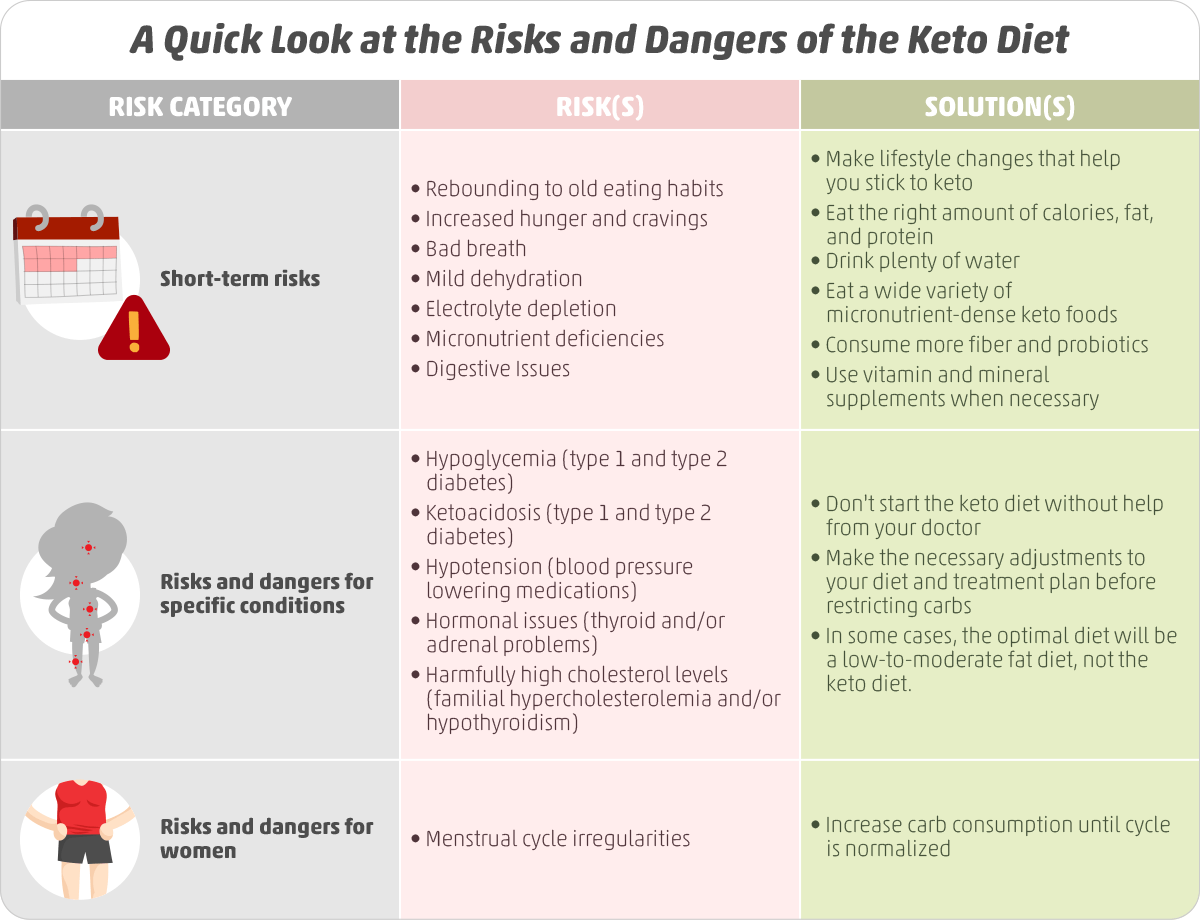
To help you formulate your keto diet so that it is safe, healthy, and effective, make sure it meets these four criteria:
- It helps you meet your body composition goals.
- It meets your micronutrient needs.
- It improves your overall health and wellbeing.
- It provides you with a dietary approach you can use to sustain your results, health, and well-being for the long term.
If your diet strategy isn’t doing these things for you, then its best to make adjustments to your dietary approach until it is optimized for you, your health, and your goals. For more information on how to do this with the keto diet, check out our guide to formulating a healthy keto diet and recipes.
Sources:
- What is the Keto Flu & How to Remedy It? — Ruled.me
- The Benefits of The Ketogenic Diet — Ruled.me
- Long-term effects of a ketogenic diet in obese patients — NCBI
- Benefits of Ketogenic Diet for Management of Type Two Diabetes: A Review — Journal of Obesity & Eating Disorders
- Timeline of changes in appetite during weight loss with a ketogenic diet. — NCBI
- Diabetic Ketoacidosis: A Review and Update — Springer Link
- Hyperglycemic Crises in Adult Patients With Diabetes — American Diabetes Association
- Do Very Low-Carb Diets Mess Up Some Women’s Hormones? — Healthline
- Diet-Induced Low-Grade Metabolic Acidosis and Clinical Outcomes: A Review — NCBI
- Low protein diets for non-diabetic adults with chronic kidney disease — NCBI
- A low-carbohydrate diet may prevent end-stage renal failure in type 2 diabetes. A case report — NCBI
- Effects of an energy-restricted low-carbohydrate, high unsaturated fat/low saturated fat diet versus a high-carbohydrate, low-fat diet in type 2 diabetes: A 2-year randomized clinical trial — NCBI